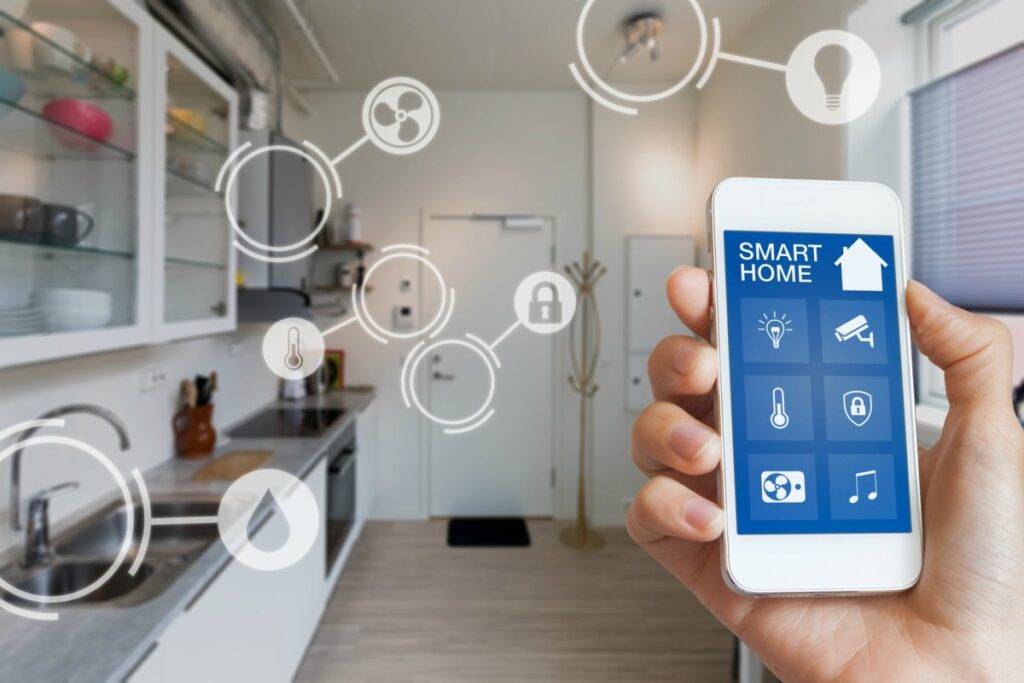Table of Contents
Core technologies in smart devices are the building blocks that make these gadgets intelligent and connected. They allow devices to interact with us and each other seamlessly, improving our daily lives. From smartphones to smart homes, these core technologies enable smart devices to collect data, communicate, and perform tasks automatically. Understanding these technologies helps us appreciate how these devices work and how they will evolve in the future.
In this post, we will dive deep into the core technologies in smart devices, focusing on the key components like sensors, embedded systems, communication networks, and more. These technologies are transforming everything from the way we interact with our homes to how businesses improve efficiency. By exploring these core technologies, you’ll gain a better understanding of how smart devices are shaping our world.
What Are Core Technologies in Smart Devices? A Simple Overview
Core technologies in smart devices are the key components that make smart devices function and communicate with other gadgets. These technologies help devices like smartphones, smartwatches, and even refrigerators become intelligent and responsive. Without these core technologies, smart devices would not be able to interact with their environment or with the people using them.
The main technologies that make these devices work include sensors, communication networks, embedded systems, and more. Sensors, for example, can detect motion, temperature, or light. Embedded systems are like the brains of a smart device, allowing it to perform tasks. Communication networks help devices connect with the internet and other devices, sharing important data. All these elements work together to make your smart devices smarter.
Sensors: The Eyes and Ears of Core Technologies in Smart Devices

Sensors are a critical part of the core technologies in smart devices. They act like the eyes and ears of these devices, gathering information from the surroundings. For example, a temperature sensor in a smart thermostat can detect changes in room temperature and adjust accordingly. Without sensors, devices wouldn’t know what’s happening in their environment.
There are different types of sensors used in smart devices, including motion sensors, light sensors, and pressure sensors. These sensors allow devices to react to changes in the environment. For example, a motion sensor in a smart light will turn on the light when it detects movement in the room. These sensors work together to make smart devices responsive and interactive.
- Motion sensors help detect movements around the device.
- Light sensors adjust the brightness based on lighting conditions.
- Temperature sensors monitor and control room temperature.
The Role of Embedded Systems in Smart Devices’ Intelligence
Embedded systems are another important part of core technologies in smart devices. These are small computers built into smart devices. They control how the device works and manage all its functions. Think of them as the brains inside smart gadgets. They help the device perform tasks like turning on, adjusting settings, or sending data to other devices.
These systems combine hardware and software to make devices smarter. For example, a smart doorbell has an embedded system that controls the camera, microphone, and speaker. It allows you to see and speak with visitors through your phone. Thanks to embedded systems, devices are becoming more capable and efficient every day.
- Hardware helps manage tasks like data processing.
- Software allows for smart decisions based on user input.
- Efficiency ensures the device performs tasks smoothly and quickly.
Communication Networks: Connecting Core Technologies in Smart Devices

Communication networks play a vital role in making core technologies in smart devices work. These networks allow devices to connect to the internet and communicate with other gadgets. Without a strong communication network, smart devices would not be able to share data or interact with each other.
There are two main types of communication networks used in smart devices: short-range communication networks and wide-area networks. Short-range communication includes technologies like Bluetooth and Wi-Fi, which are great for connecting devices in the same room or area. Wide-area networks, like LoRa or 5G, are used for devices that need to connect over larger distances, such as smart city infrastructure or remote monitoring systems.
- Bluetooth and Wi-Fi help connect devices in close range.
- LoRa and 5G cover wider areas for smart city applications.
The Impact of Machine Learning on Core Technologies in Smart Devices
Machine learning is changing the way core technologies in smart devices work. It allows devices to learn from experience and make decisions on their own. For example, a smart speaker can learn your voice commands and improve how it responds over time. It adapts to your preferences, making your experience smoother.
Machine learning helps smart devices become more personalized. It also allows them to perform complex tasks without human input. This technology is behind many of the intelligent features in devices like voice assistants, self-driving cars, and smart cameras. As machine learning evolves, we can expect even smarter devices in the future.
- Personalization helps the device understand your preferences.
- Automation allows devices to perform tasks without being told.
- Learning helps devices get better over time.
How Core Technologies in Smart Devices Improve Security and Privacy

As more devices become smarter, core technologies in smart devices must focus on security and privacy. Smart devices collect a lot of personal information, like your location, preferences, and even health data. That’s why it’s important to protect this data from cyberattacks and privacy breaches.
Smart devices use advanced encryption methods to keep your information safe. They also use technologies like facial recognition or fingerprint scanners to ensure that only authorized users can access the device. Additionally, regular software updates are important for keeping devices secure from new threats. With proper security measures, smart devices can be trusted to protect your personal data.
- Encryption keeps your data safe from hackers.
- Biometrics like facial and fingerprint recognition ensure security.
- Updates fix security holes and protect against new threats.
Conclusion
The core technologies in smart devices are what make these gadgets work so well and interact with us. Sensors, embedded systems, and communication networks help devices collect information, perform tasks, and stay connected. As these technologies get better, smart devices will keep improving and becoming more helpful in our daily lives.
The future of smart devices looks exciting, with even smarter features and better security on the way. As we continue to rely on these technologies, it’s important to understand how they work and how they improve our world. Whether it’s making our homes smarter or helping us stay safe, these core technologies are changing the way we live.
FAQs
Q: What are core technologies in smart devices?
A: Core technologies in smart devices include sensors, embedded systems, and communication networks, which help devices collect data, perform tasks, and stay connected.
Q: How do sensors work in smart devices?
A: Sensors in smart devices detect changes in the environment, like motion, temperature, or light, and send this information to help the device perform tasks.
Q: Why are embedded systems important in smart devices?
A: Embedded systems act as the brain of smart devices, controlling their functions and allowing them to perform tasks like adjusting settings or sending data.
Q: How do communication networks help smart devices?
A: Communication networks allow smart devices to connect to the internet and share data with other devices, enabling features like remote control and updates.
Q: What role does machine learning play in smart devices?
A: Machine learning helps smart devices learn from experience, making them more adaptive and efficient by improving how they respond to user commands and changing conditions.
Q: How do smart devices keep our data secure?
A: Smart devices use encryption, biometric security like facial recognition, and regular software updates to protect personal data and ensure privacy.


